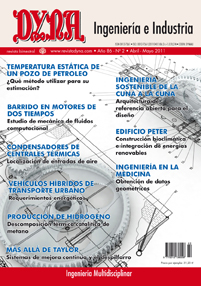PETER BUILDING: AN EXAMPLE OF BIOCLIMATIC BUILDING AND INTEGRATION OF RENEWABLE ENERGIES INTO THE EDIFICATION
Keywords:
Integración, Edificio de energía cero(EEC), Eficiencia Energética en la edificaciónAbstract
The present article is intended to show the main features, advantages and applications of bioclimatic architecture as well the integration of renewable energies into edification. For such purpose, the Project of an approximate 1.700 m2 intelligent zero-conventional-energy (“Bioclimatic”) building (referred to as PETER Project (Experimental Transborder Park on Renewable Energies), which is being located in the Campus of the University of Extremadura in Badajoz, is described. It will implement the concepts of saving and energy efficiency in buildings. Specific principles directly relating building design, like energy saving, energy efficient and integration of renewable energy sources. In addition, it will be shown how acclimating buildings by measures that diminish energy consumption is possible in extreme climate cities (like Badajoz itself, with necessity of heating in winter and refrigeration in summer). Finally, a description of the energy response of the building is carried out via computer simulation techniques.Downloads
Published
2011-03-30
Issue
Section
ARTICULOS

